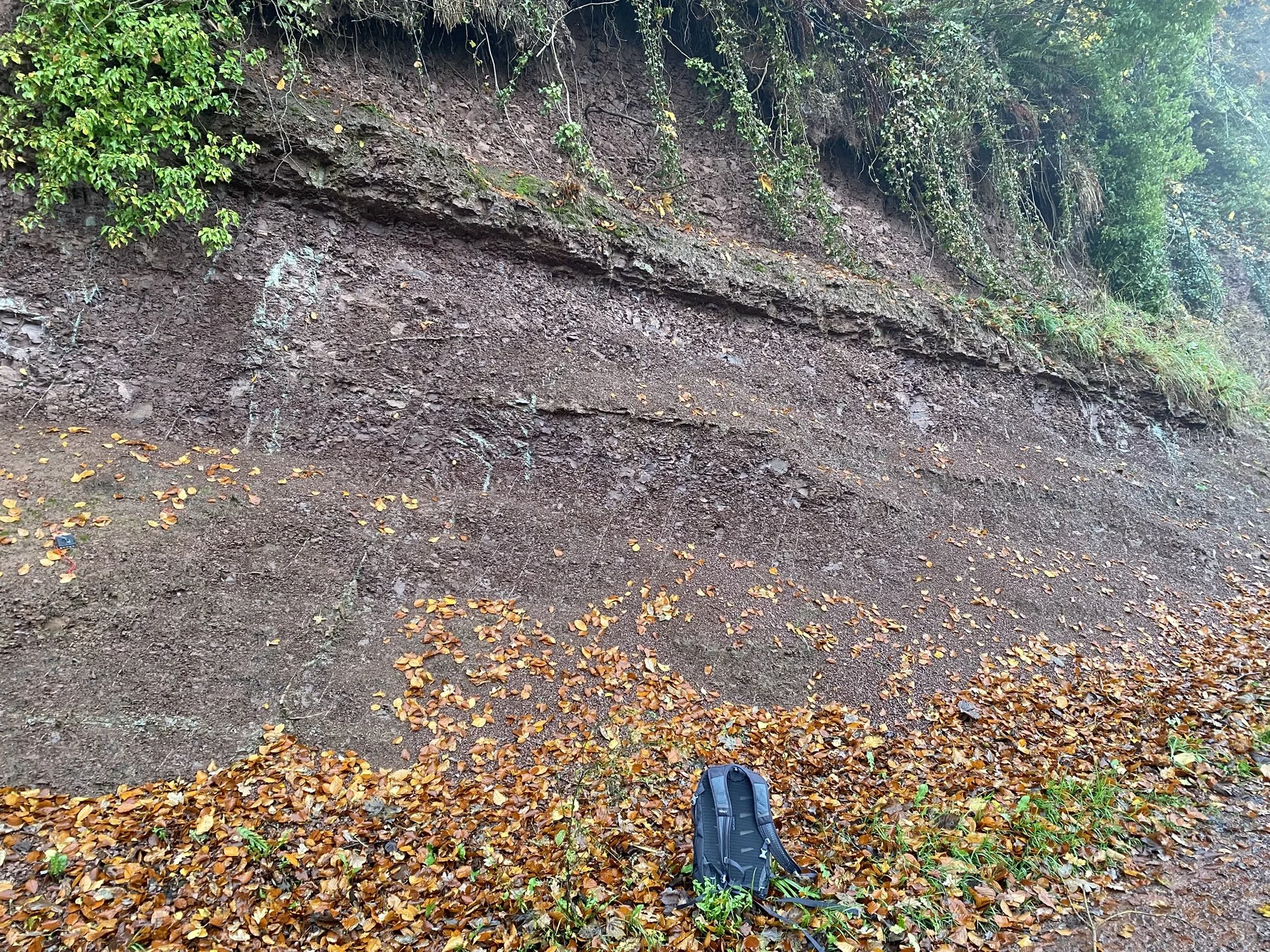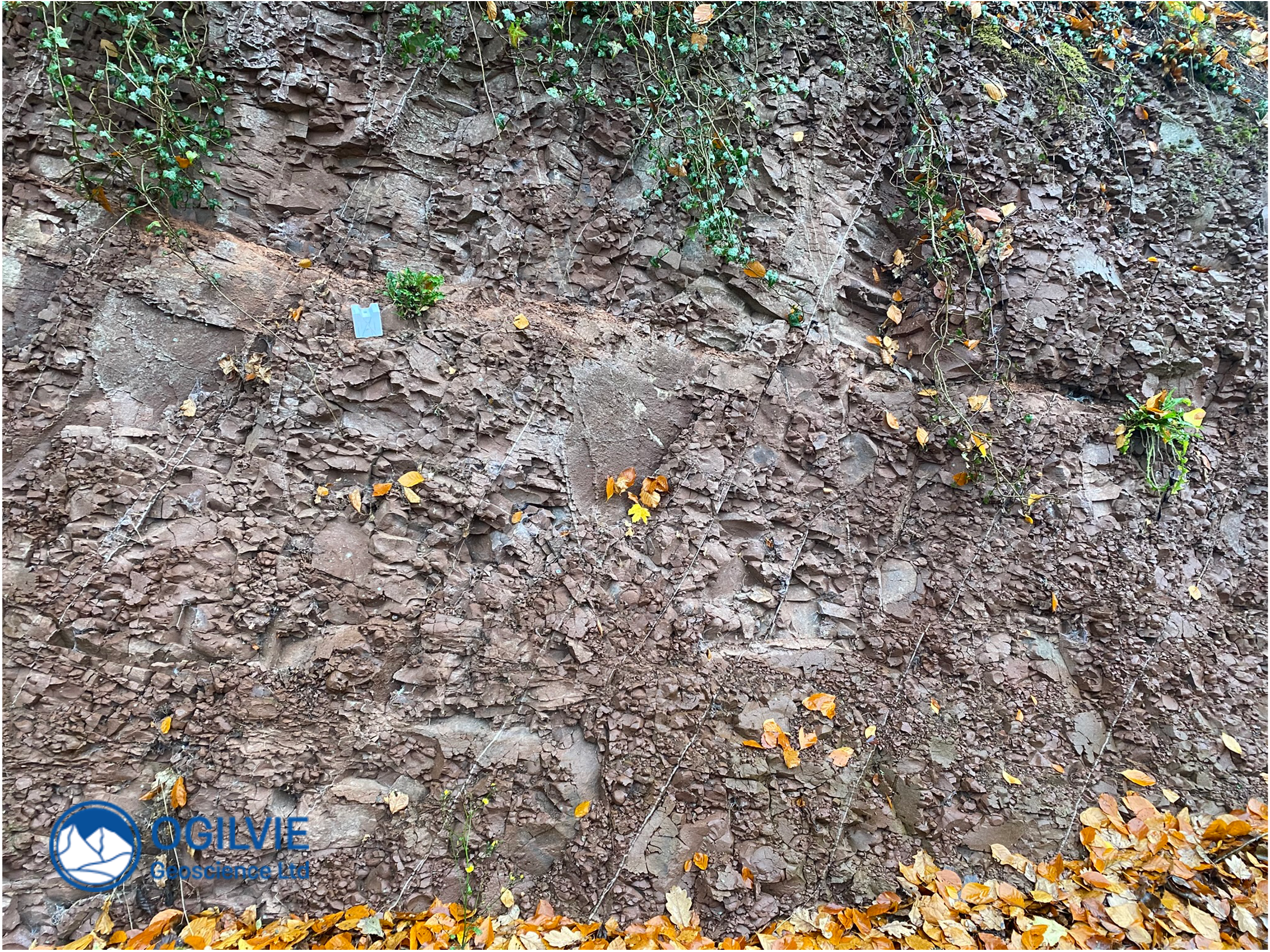Fractured mudstones, Stanley, Perthshire, UK
What is of interest here ?
Start of a 200 m long exposure of mudstone just down the track from the log cabin
A mudstone from the Lower Devonian period (Cromlix mudstone - Strathmore Group) with different types of fractures, fracture cements and other interesting features of structural geology.
How to get there ?
A short walk along the north bank of the River Tay from the park at Stanley Mills, just off the A9 north of Perth (UK). Continue on the path to the point where there is an option to take steps (with railing) down to the north bank of the Tay and also a steeper path on your left. Take the steeper path (high above the river) which goes down past a log cabin on your right. Once down at the level of the river, the outcrops are on your left.
The mudstones are a reddish-purple colour and are quite silty. Here, they are quite strongly bedded unlike at the outcrops on the immediate river bank. More detail on those outcrops are given in..
http://earthwise.bgs.ac.uk/index.php/Stanley_and_Campsie_Linn_-_an_excursion
Heavy fracturing
Intensely fractured mudstones on a cliff section along the path - a distinctive green stain picks out a once connected fracture network that formed well before the recent decompaction/stress relief fractures
There are many cracks or fractures in these rocks. Some of the oldest ones are dessication cracks that have formed when the mud dried out. Background fractures have reduced the mudstones to rubble in many places. It is likely that many of these are stress-relief/decompaction fractures. Many of the little blocks that have been created by fracturing have since been weathered into ball shaped features - known as spheroidal weathering.
There are also longer, more discrete fractures that contain some mineral fill (calcite). Others have a greenish-blue stain around their edges which tells us that the fractures must have formed a connected network at one point in their history. This is because they must have been open and connected to allow fluids to pass through and create the stain along them.
Conjugate faults
The larger fractures form conjugate sets (see below) as predicted by Anderson and are therefore normal faults….
https://www.ogilviegeoscience.com/blog/andersons-model-of-faulting-moray-coast
Note that they cross each other and generally dip (to the left or right) at 60 degrees, as predicted by the model. Interestingly, the conjugate sets have been sheared by some reactivation along a bedding plane. You can see this (dipping to the right hand side) in the middle of the field of view below, the light brown material is likely a fault gouge.
The Andy cube (from Molly Turko PhD) is doubling up as a scale here but it’s main use is to show how these geometries are related to the 3 principle stresses.
Networks of conjugate faults (side view of cliff) which have been displaced by slip along a bedding plane in centre of view. Andy cube for scale just below the slip plane.
Other Structural Geology Features
One of the conjugate faults filled with calcite has a feather like appearance. One idea is that these are fringe structures related to the development of a plumose structure which forms when joints grow. Or they could just be tail cracks tracking stress concentrations at the end of a slipping fault. This structure is not as clear now (Nov. 2025) as it was (when photo was taken in 2020) as many blocks of mudstone have been dislodged since then.
The calcite mineral fill is interesting - the fibres run perpendicular to the fracture. It is likley that the these have grown outwards from the centre as the fracture has opened. These are often call antiaxial cracks. There is more detail on this in Fossen’s excellent structural geology textbook. There are also pods of mudstone in between the cements.
Feather like structure related to a fault in the mudstone and (right) detail of calcite cements in one of the faults.




